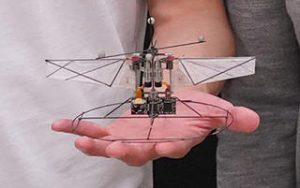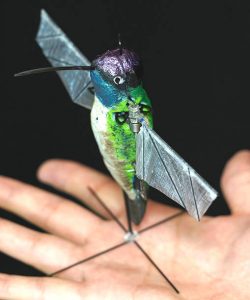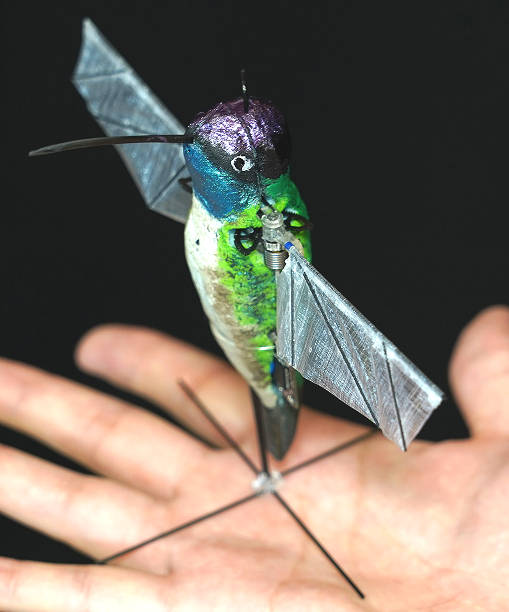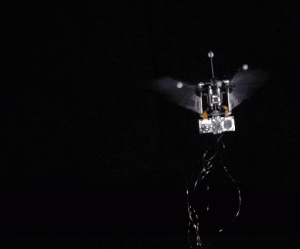Artificial intelligence has allowed a hummingbird-inspired robot to manoeuvre like the real thing, according to Purdue University, which is searching for a way to make smaller drones.
Due to the way conventional aerodynamics work, according to the university, drones can’t be made infinitely smaller as they can’t generate enough lift to support their weight – but hummingbirds don’t use conventional aerodynamics.
“The physics is simply different,” said researcher Xinyan Deng. This makes it possible for smaller, flying animals to exist, and also possible for us to scale down flapping wing robots.” – going on to explain that the aerodynamics is inherently unsteady, with high angles of attack and high lift.

 The robot, as it flies, and dressed in a decorative faring
The robot, as it flies, and dressed in a decorative faring
There is a lot going on with this project, with innovative mechanics controlled by algorithms derived from physical models and artificial intelligence.
The bodies are 3d-printed, while the wings (170mm span) have carbon fibre frames supporting laser-cut membranes – combined to give just the right amount of flexibility and springiness. Only two actuators are used, one for each wing, and there are sensors (magnetic, gyro, accelerometer) and an MCU. Power comes from a remote source, fed in through thin wires – although an on-board power source is planned.
Total lift is so far up to 27g, according to the university, while weight has been as low as 12g in some versions of the robot – the top-end for hummingbirds.
Flight information has been built up from years of observing real humming birds in collaboration with the University of Montana. As an example of possible manoeuvres, said Purdue, to escape trouble a hummingbird can fly backwards while yawing 180° and re-stabilise – all in 10 wing beats taking a quarter of a second.
Control comes from a blend of techniques.
According to the paper ‘Learning extreme hummingbird maneuvers on flapping wing robots‘, which shows how the quarter second 180° turn was implemented in a robot:
We use model-based non-linear control for nominal flight control, as the dynamic model is relatively accurate for these conditions. However, during extreme manoeuvre, the modelling error becomes unmanageable. A model-free reinforcement learning policy trained in simulation was optimised to destabilise the system and maximise the performance during manoeuvring. The hybrid policy manifests a manoeuvre that is close to that observed in hummingbirds. Direct simulation-to-real transfer is achieved, demonstrating the hummingbird-like fast evasive manoeuvres on the at-scale hummingbird robot.
More details on the way the techniques were developed is available in ‘Flappy hummingbird: An open source dynamic simulation of flapping wing robots and animals‘. It covers creating a computer simulation (compatible with OpenAI Gym) of the robot and the use of that in algorithm development. According to the paper’s abstract:
The unsteady aerodynamics and the highly non-linear flight dynamics present challenging control problems for conventional and learning control algorithms such as ‘reinforcement learning’. As a benchmark study, we present a linear controller for hovering stabilisation and a ‘deep reinforcement learning’ control policy for goal-directed manoeuvring. Finally, we demonstrate direct simulation-to-real transfer of both control policies onto the physical robot, further demonstrating the fidelity of the simulation.
Feeling its way
Beyond control, the team has given the robot a sense of proximity and touch by monitoring motor current as the wings are flapped.
This has allowed the robot to follow terrain, follow a wall, and go through a narrow corridor – see a third paper: ‘Acting is seeing: Navigating tight space using flapping wings‘.
Source: electronicsweekly












7 thoughts on “E-Humming Bird Robot: A More Manoeuvrable Drone”